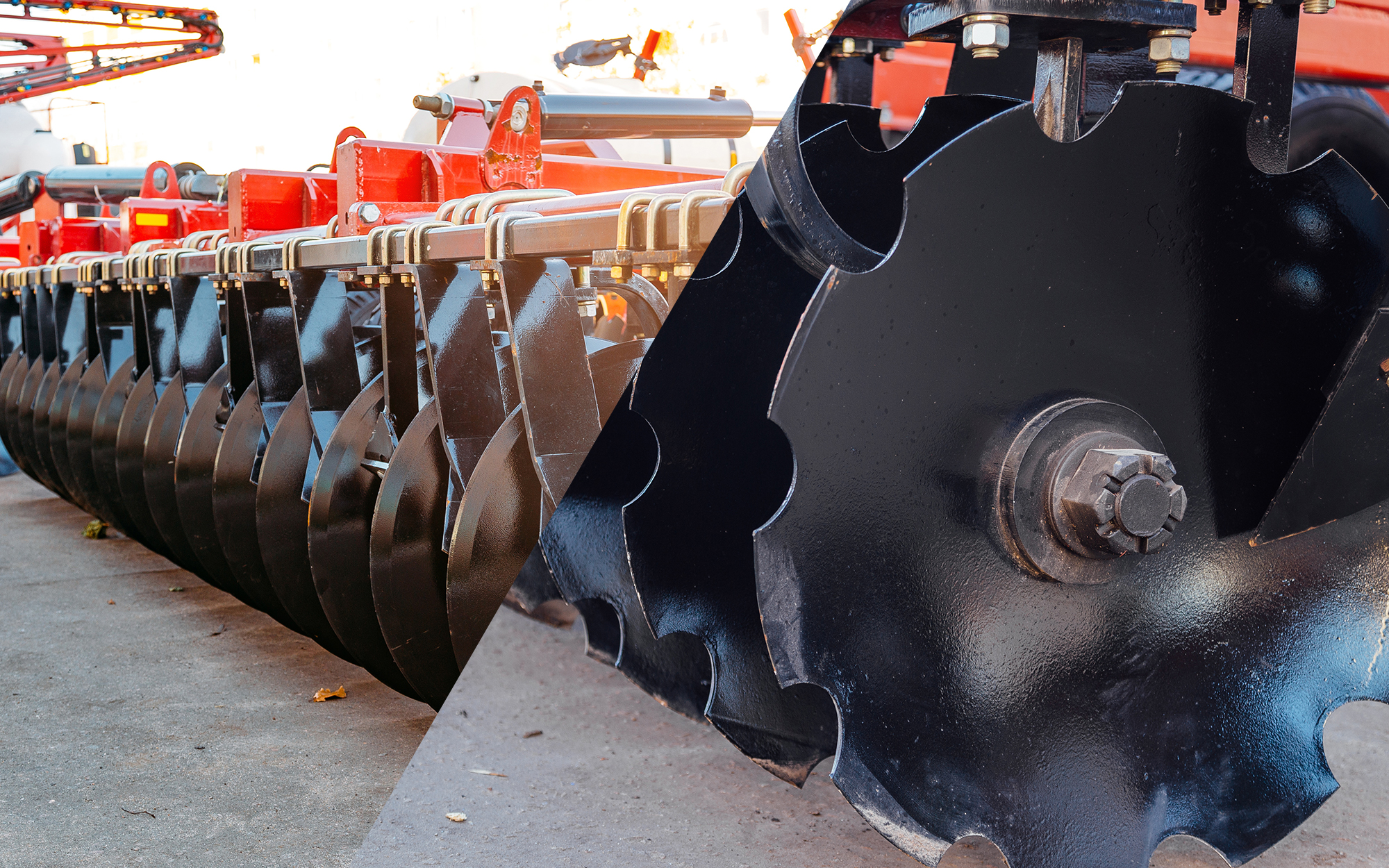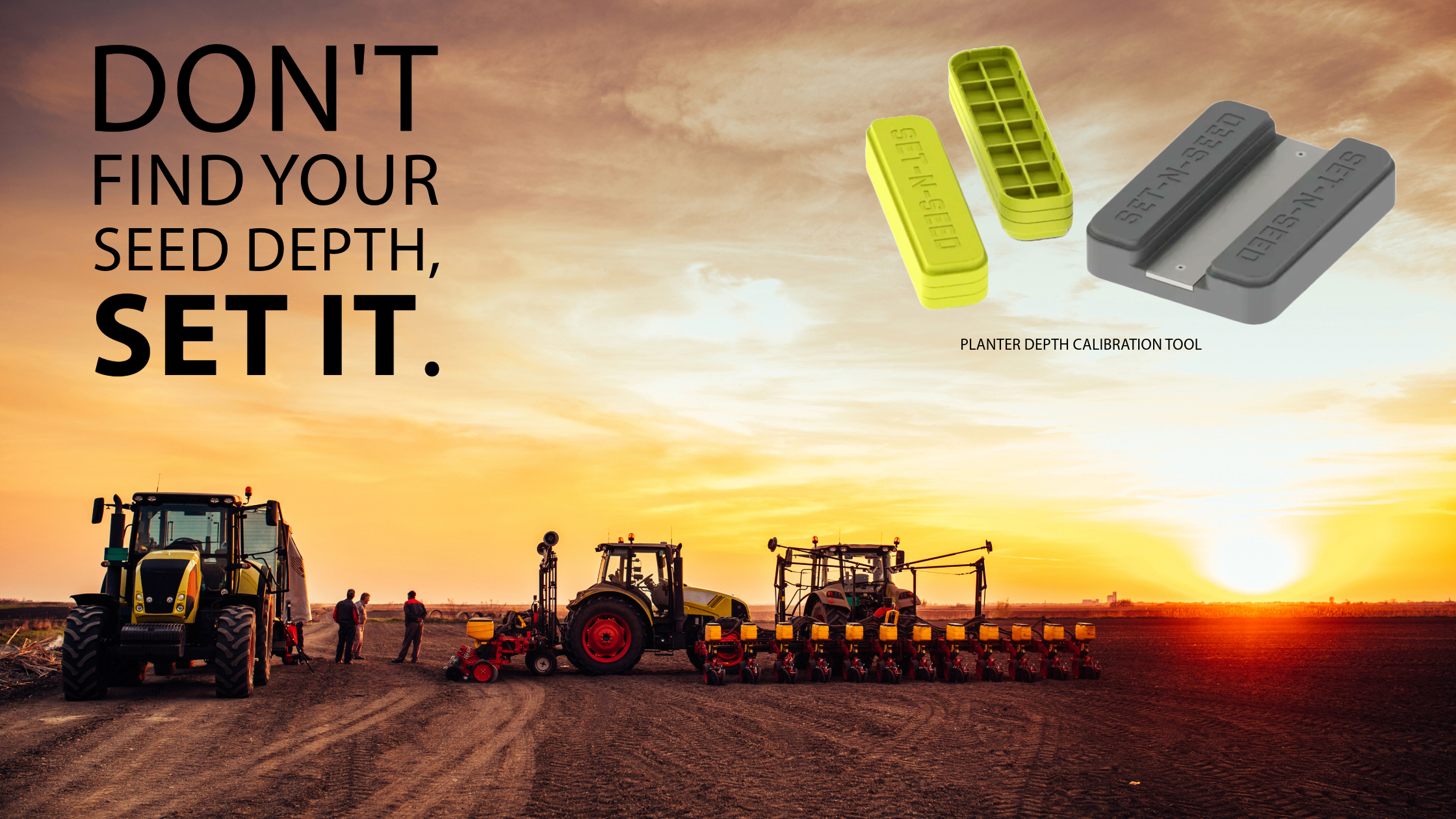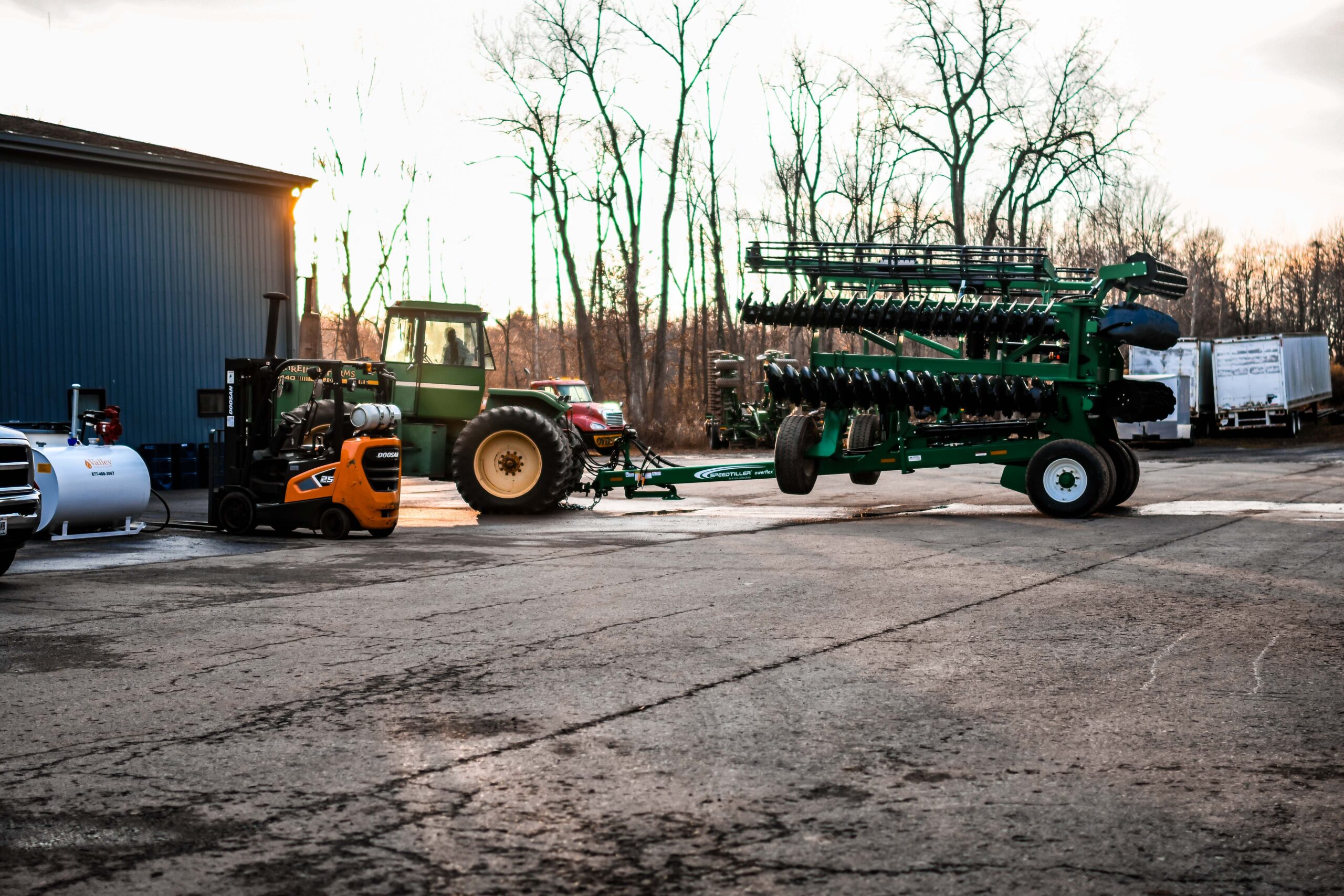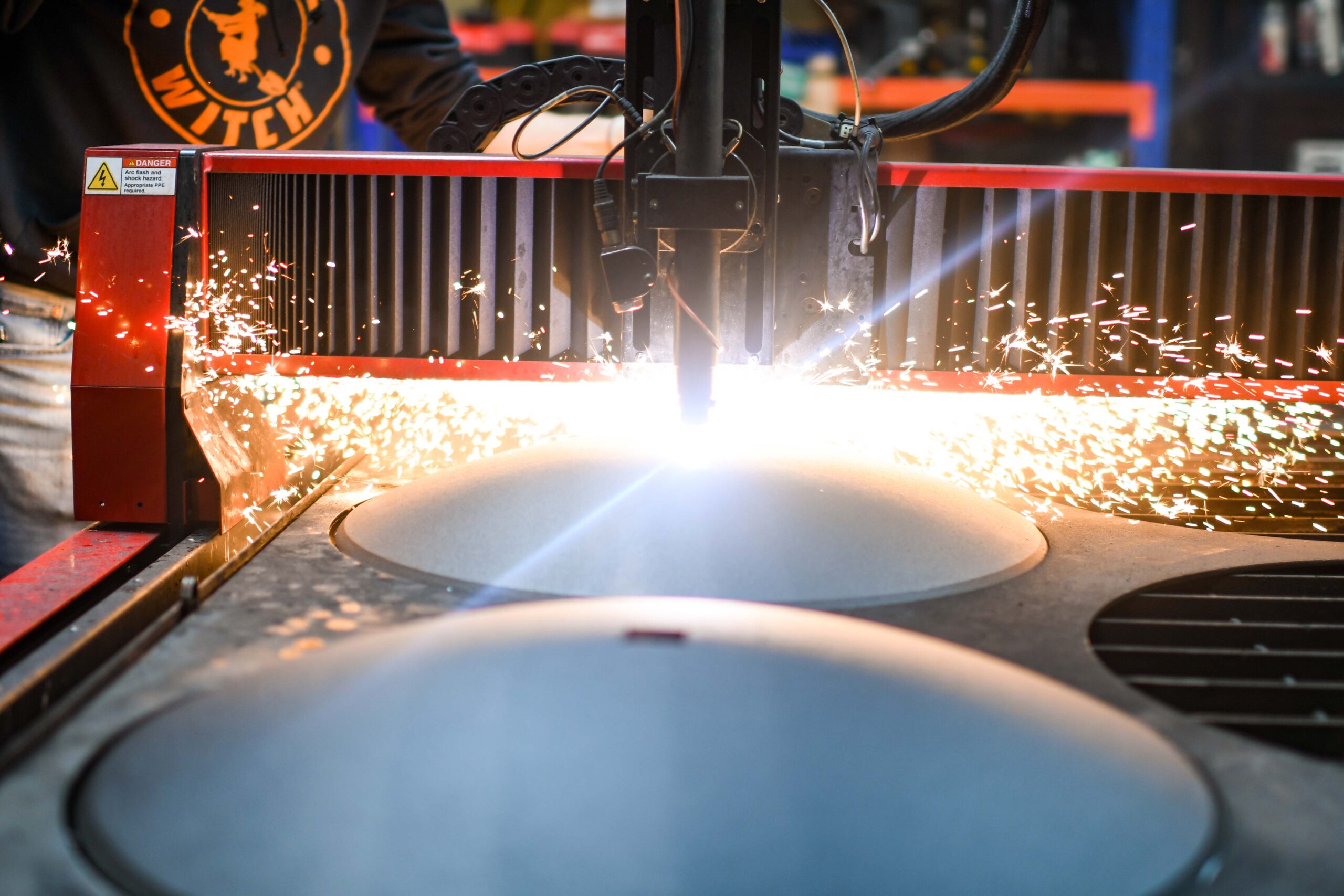
Understanding the Differences Between Notched vs. Smooth Disc Blades
Are you using the correct disc blade for your crops? There are several differences between notched vs. smooth disc blades that can simplify the job and improve efficiency. Keep reading to learn how to effectively use both types of blades.
What Are Disc Blades Used For?
Growers use disc blades to break up leftover plant material at the end of the season or to till the soil before planting new crops at the beginning of the season. However, not all disc blades are created equally, and it’s important to understand the differences between the two so you can select the right tool for the job.
There are two primary types of disc blades, notched and smooth. As their names suggest, the biggest difference is the design of the blade edge. Notched disc blades are manufactured with round serrations on the edge while smooth disc blades have no serrations.
What Is a Notched Disc Blade?
Growers use notched disc blades, or serrated disc blades, to chop through old crops and hard soil. Notched disc blades are more powerful than smooth ones, and their serrated edges more easily cut through vegetation, compacted soil, branches, dense roots, and other crop residue.
These characteristics make notched blades excellent for bulky or chunky crop residue. If you attempt to cut through denser crops with a smooth blade, they tend to push residual crop matter forward or roll over it rather than breaking it up. Notched blades push and shred chunks, leaving the soil in better condition for planting.
Advantages of Notched Disc Blades
There are several advantages of notched disc blades:
- More effective and precise on hard soil
- Aggressive cutting edge that digs deeper
- More efficient tilling on hard terrain
- More easily handles debris, roots, and twigs
Disadvantages of Notched Disc Blades
Disadvantages of plow disc blades are:
- More difficult to sharpen
- Shorter lifetime than smooth disc blades
- Increased soil disturbance
What Is a Smooth Disc Blade?
Smooth disc blades are manufactured with a smooth edge all around. This characteristic makes them better suited for land that has already been plowed and tilled. If you use smooth blades on soil that’s hard or contains limbs, branches, or thick crop residue, you risk getting hung up, tilling ineffectively, or damaging the blade. However, smooth disc blades aren’t without their advantages.
Advantages of Smooth Disc Blades
Advantages of this plow disc blade include:
- More effectively till sandy and dry soils
- Less vulnerable to clay and rocky soils
- Less expensive than notched disc blades
- Can be easily sharpened as needed
- Don’t need to be replaced as often
- Lower overall net costs
- Smoother soil for planting
Disadvantages of Smooth Disc Blades
While this blade is excellent for smoothing soil, it does come with disadvantages, including:
- Difficult operation with tough soil or overgrown crops
- Less power than notch blades
- More easily damaged or warped by debris, tree roots, or twigs
- Only work well on lighter soils
Do You Know Whether You Need Smooth or Notched Disc Blades?
Rangeline carries a wide selection of both so you can get the right tools for the job all in one place. Explore our selection of plain edge blades and notched blades today.
Which Plow Disc Blade Is Best for My Business?
Now that you understand what a notched vs. smooth disc blade is, which kind is best for your agricultural business? As a grower, you need equipment that works with you, not against you. Purchasing the right plow disc blade ensures your soil is properly tilled.
The reality is that you really need both notched and plain disc blades to work the soil and keep it in optimum condition for planting season. Notched disc blades are best used at the end of the season when you need to clear out crop residue, roots, branches, and other waste while tilling it into the soil. They may also be necessary before planting in hard or rocky soil.
Smooth disc blades are more frequently used at the beginning of the season to prepare the soil for planting after it has already been tilled. They are also less susceptible to damage
In short, if your primary goal is to harrow through rocky soil, you need a notched disc blade. If you just want to smooth already-tilled soil, then get smooth disc blades. Ultimately, though, it’s recommended to keep both on hand throughout the season so you’re always prepared to work the soil, no matter the conditions.
Which Option Is Better Suited to Rocky Conditions?
Based on the above information, you may be thinking that notched disc blades are better suited to rocky conditions. In reality, however, smooth disc blades generally operate better in rocky conditions. This is because the serrated edges of notched disc blades can get chipped, cracked, or warp when they hit an underground rock. Smooth disc blades, on the other hand, are more likely to slide around rocks, go over them, or push them deeper into the soil.
Either way, working disc blades in rocky soil significantly reduces their longevity and durability. Smooth disc blades come with the additional benefit of being easily sharpened so their lifespan can be extended, even when operating in rocky conditions. The same can’t be said for notched disc blades, meaning that smooth disc blades generally operate better with rocky soil types.
Have Any Questions About Notched vs. Smooth Disc Blades?
Hopefully, you’ve been able to identify whether you need notched or smooth disc blades for your next job. If you’re still trying to understand the differences or you’re working with a soil type we didn’t discuss above, please reach out to us. We’ll be happy to help you understand their different characteristics along with examples, and we can help you select the best tool for the job, no matter what type of soil conditions you’re working with.








